

Our services
Justifying and gaining ‘buy-in’ to implement your tourism plan, feasibility studies and business planning.
We recognise the important role comprehensive studies and research play towards effective long term destination planning. Our past research projects have successfully enabled justified decision-making for many of our clients, resulting in buy-in, commitment, investment and implementation, delivering multiple benefits for people and places.
Behind most sustainable tourism developments lies a sound feasibility study and a solid business case. TRC is recognised for innovation in identifying new products that will be attractive for a destination whether they be tours, trails, accommodation, visitor facilities, services and transport. We also help clients improve their business, products and services. TRC is frequently asked to provide professional independent advice on a project’s viability. We have a proven reputation for robust feasibility studies tailored to clients’ needs and offering practical advice for achieving goals and investment. The feasibility studies conducted by TRC range from large-scale projects through to small business ventures. Our recommendations will be based on comprehensive and robust details to help you make the most informed and best possible decision.

WHAT WE DELIVER
TRC can provide the expertise needed to comprehensively assess the feasibility of your tourism proposal. This includes:
Market analysis
Analyse existing visitation, visitor demographics and trends. Understand priority regional target markets and assess against the tourism proposal
Strategic alignment
How does your tourism proposal align with and deliver on local, regional and national priorities and commitments? Strategic alignment particularly with Government priorities and commitments can support justification, ‘buy-in’ and investment in the proposal
Benchmarking and comparative analysis
A review of relevant case studies and evaluation of similar experiences or products similar to your proposal.
Stakeholder engagement
Seeking input from relevant stakeholders on your proposal, whether it is supported or not and any benefits or issues the proposal may create.
Assessment of viability
Financial analysis and projections, economic impact assessment, cost benefit analysis and return on investment.
Social and environmental assessment
Project feasibility is also about ensuring long term benefits for people and places. It’s important to first consider and measure social and environmental impacts of proposals, both positive and negative. Tourism for good is about achieving positive and mutually beneficial outcomes, that does not harm the human or natural world, and if anything, makes it better.
Risk assessment
Risks are anything that may impact the success of your project proposal. These may be revealed during a social and environmental impact assessment, may relate to existing legislative or policy restrictions, land tenure, financial situation, capacity, governance and management, ownership, conflicting relationships and viewpoints. Risks enable us to lay all concerns and considerations on the table, so we can determine together through strategic planning, if the risk can be reduced, mitigated or removed completely.
Business planning and Business Cases
Should the feasibility study return a favourable result, TRC can develop a Business Case and Business Plan to commit to project ownership and delivery and seek funding support.
Investment Prospectus
A complementary component to a Feasibility Study or Business Case, the investment prospectus can be the attractive summarised brochure highlighting priority projects, benefits and funding requirements.
WHAT’S IN IT FOR YOU?
By providing a strategic approach to feasibility by identifying key internal and external environmental forces, and providing guidance on strategies to best meet challenges and opportunities.
Ensure a better ROI by pin-pointing those areas of investment likely to make a positive impact in meeting your strategic goals.
Attract more visitors and increase yield by providing global best practice tourism experiences and services that meet the changing needs of your digitally savvy visitors.
Secure funding by developing a business case that clearly highlights the health, economic and social benefits of proposed tourism developments and projects.
TOURISM PLANNING SERVICES
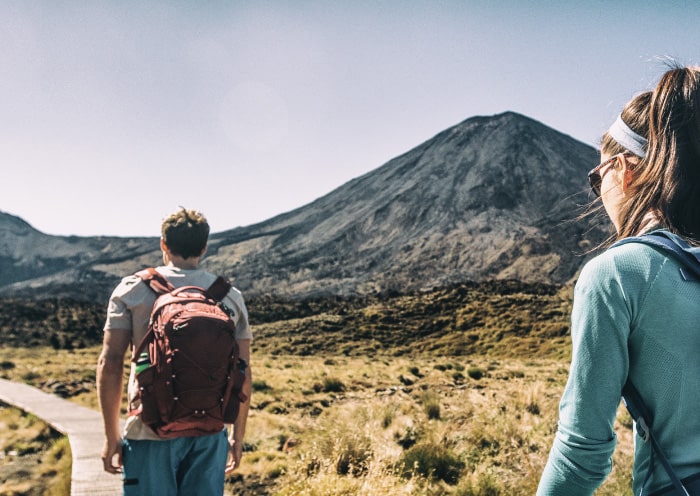
Sustainable destination planning
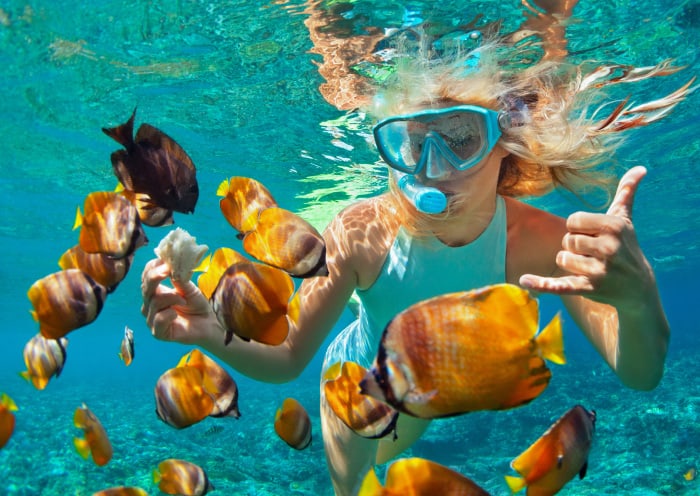
Experience and product development
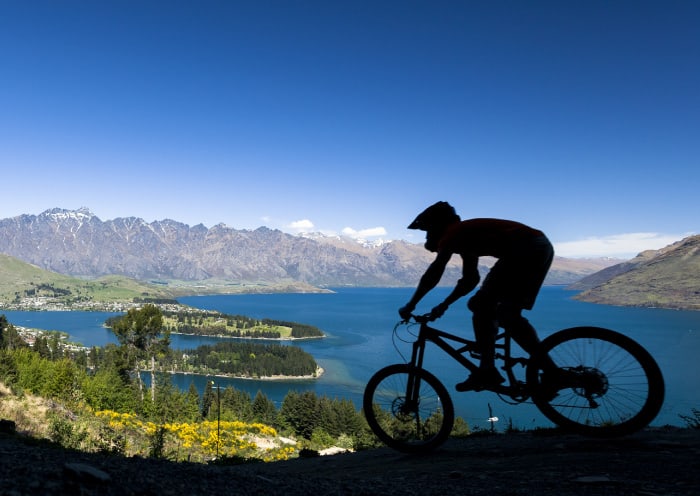
Feasibility studies and business planning

Indigenous tourism planning
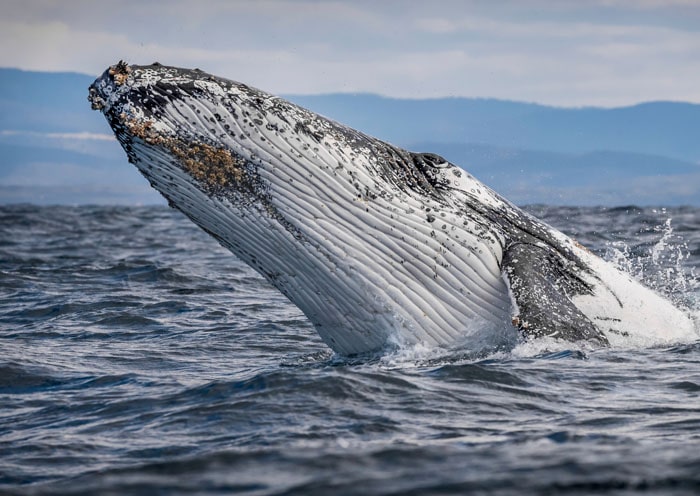
Eco Accreditation
TESTIMONIALS
Gippsland Destination Management Plan Janet and the TRC team did a great job with the Gippsland Destination Management Plan and I would recommend them to any regional tourism organisation.
Kokoda Track Maintenance Program and Operations Manual The TRC team mobilised rapidly to PNG to assess and repair Kokoda Track bridges severely damaged in the very heavy wet season of last year being choppered into the remote rugged terrain of the Track. Working in very well with The Kokoda Track Authority Rangers, Kokoda Initiative and local communities their efforts and skill contributed greatly to the Kokoda Track being ready for the 2019 trekking season. Remote communities also benefited from being reconnected across the often treacherous river crossings. TRC also helped build the capacities of The Kokoda Track Authority Rangers and local communities to explore ways for future sustainable bridge building and general track maintenance works. The resultant Track Operations Manual produced by TRC is expected to be a valuable guide for future Kokoda Track works.
Queenstown Trails for the future 2015-2025 From the outset the TRC team were responsive, intelligent, forward thinking and always available. The Queenstown Trails Trust worked with the TRC team in 2015 to craft a 10 Year Strategic Plan. The nature of our business involves very important stakeholders, great vision and many face to face meetings to form our plan. . The result of this partnership being a very robust and well thought out plan that we are proud to utilise to assist us in setting the future path of the Queenstown Trails Trust. Interestingly – TRC also formulated the original Trails Trust plan way back in 2004 – it was great to have the opportunity of working with TRC again as they truly understand our business.
Brook Waimarama Sanctuary Visitor Experience Strategy TRC delivered a quality Visitor Experience Strategy for our organisation in a short timeframe. They took a practical approach that included gaining insight from the project’s key stakeholders and tied together the various elements of the project’s vision into a cohesive, actionable strategy.
Baw Baw Destination Action Plan, Marketing Plan & Recreational Vehicle and Tourism Signage Plan TRC’s expertise in developing successful strategies regarding visitor economies and regional tourism proved extremely helpful to Baw Baw Shire Council when it sought guidance in enhancing its own Tourism Marketing Strategy, as well as in creating detailed action plans for three hero destinations across the Shire.
Destination Management Plan for Destination Southern NSW TRC prepared and finalised our Regional Destination Management Plan on time and on budget. TRC provided great professional advice throughout the project – they also took on board the view and guidance we gave. From the outset we wanted a strong partnership with our contractor and that is exactly what we got from TRC – beginning to end.
Wellington Regional Trails Framework In 2017 TRC worked with land managers and stakeholders from around the Wellington Region to develop the Wellington Regional Trails Framework. TRC’s destination management expertise, experience and professional approach was critical to the success of this ambitious project, that has seen 11 different agencies align their approaches and come together to move Wellington from an ‘under the radar’ network of tracks to a world class trails destination for residents and visitors alike.
Concept Plan for Adventure Cycling in the Tjoritja/West MacDonnell National Park TRC Tourism’s Concept Plan for Adventure Cycling in the Tjoritja/West MacDonnell National Park exceeded expectations. The case it presents for a new, nationally significant tourism product is so compelling it has attracted immediate government investment and presents exciting opportunities for private investors and Aboriginal Traditional Owners.
Hamilton and Waikato Tourism Opportunities Plan During 2016, the TRC team worked with Hamilton & Waikato Tourism and regional stakeholders to develop a comprehensive Tourism Opportunities Plan to identify opportunities for new and improved visitor experiences that had the greatest potential to drive growth. The TRC team brought significant experience in destination management and planning and a fresh perspective to the project. They were excellent to work with, engaged effectively with stakeholders and applied critical insights and analysis to complex issues.
Tourism Infrastructure Audit for Northern Tasmania Tourism Northern Tasmania set out to define the private and public sector investment needed to sustain intelligent growth in the visitor economy for the region. TRC and their associates provided the well-rounded analysis, consultation and reporting that resulted in a clear vision of what to develop, where across Northern Tasmania. Less than six months from endorsing the final work and we are already seeing significant progress on three key infrastructure projects as well as active interest from private sector investors to take on opportunities profiled in work.
Mulligans Flat Woodland Sanctuary Concept and Interpretation Plan I really appreciated the TRC Team’s professional and honest opinions in the final report and the thorough and thoughtful approach with our stakeholders.
Coastal Pacific Trail Feasibility Assessment With the November 2016 Kaikoura Earthquake, a potential opportunity was raised to develop a cycle trail from Picton to Kaikoura. TRC were engaged to perform an initial feasibility investigation. TRC were very professional and were able to provide independent guidance in their report on how governance structures should be set up should the project proceed, with likely jobs generated for the region. They delivered on time and to budget.
Visitor Experience Strategy for Tidbinbilla Nature Reserve In engaging TRC Tourism the ACT Parks & Conservation Service was seeking to develop a holistic Visitor Experience Strategy for Tidbinbilla Nature Reserve. As an iconic destination Tidbinbilla is ideally positioned to leverage from the emerging nature based tourism appetite for authentic experiences in a natural setting. Working with all stakeholders in a collaborative, intuitive manner TRC Tourism delivered a high quality outcome. A strategic blue print for the future.
New Zealand National Wetlands Trust Feasibility Study Being a nationally significant project that will rely on tourist visits for its long-term financial sustainability, it’s crucial we get the best advice from professionals in the industry. TRC was our first port of call for a reality check on the feasibility of our proposal.
PROJECT HIGHLIGHTS
Palm island master plan, magnetic island (yunbenun) 2030 tourism masterplan, fabalice strategic plan, wellington region destination management plan, newcastle waters historic township precinct master plan, rangitīkei destination management plan.
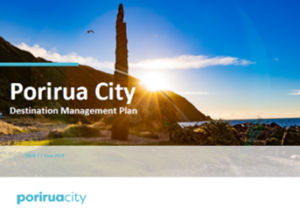
Porirua Destination Management Plan
Eastwood hill visitor experience recommendations.
Get in touch, we look forward to discussing your challenge.
Feasibility Study in Tourism
- Living reference work entry
- Latest version View entry history
- First Online: 04 August 2023
- Cite this living reference work entry

- Demian Hodari 3
Feasibility studies are a standard component in preplanning hotel and tourism projects. They involve the collection and analysis of data to provide stakeholders with an independent and objective perspective on potential development opportunities. In contrast to appraisals and valuations, which usually only estimate an existing property’s market value, feasibility studies also provide strategies to help maximize the project’s potential operating profitability.
Feasibility studies play an important role in the complex, risky, and expensive property development process due to the involvement of multiple stakeholders who have conflicting objectives (Currie et al. 2009 ). To minimize subjectivity, feasibility studies provide the information and analysis necessary to estimate a project’s overall financial, operational, and strategic viability under different macroenvironmental assumptions (Hodari and Samson 2014 ).
While a standard has yet to be approved by any formal body, feasibility studies...
This is a preview of subscription content, log in via an institution to check access.
Access this chapter
Institutional subscriptions
Currie, R., S. Seaton, and F. Wesley. 2009. Determining stakeholders for feasibility analysis. Annals of Tourism Research 36: 41–63.
Article Google Scholar
Hodari, D., and D. Samson. 2014. Settling for less: The institutionalization of the hotel feasibility Study. The Journal of Hospitality Financial Management 22: 97–110.
Google Scholar
Masiero, L., Y. Yang, and R. Qiu. 2019. Understanding hotel location preference of customers: Comparing random utility and random regret decision rules. Tourism Management 73: 83–93.
O’Neill, J.W., B.A.N. Bloom, and A. Sharma. 2020. Toward improving hotel prognostications through the application of probabilistic methodologies. Cornell Hospitality Quarterly 61 (4): 373–378. https://doi.org/10.1177/1938965519899927 .
Robert, J., and J. O’Neill. 2021. Evaluating hotel time-to-delivery (TTD): Influencing factors and financial performance. Journal of Real Estate Literature 29 (1): 1–17.
Download references
Author information
Authors and affiliations.
University of Applied Sciences and Arts Western, Lausanne, Switzerland
Demian Hodari
You can also search for this author in PubMed Google Scholar
Corresponding author
Correspondence to Demian Hodari .
Editor information
Editors and affiliations.
School of Hospitality Leadership, University of Wisconsin-Stout, Menomonie, WI, USA
Jafar Jafari
School of Hotel and Tourism Management, The Hong Kong Polytechnic University, Hong Kong, China
Honggen Xiao
Section Editor information
Department of Geography and Environmental Studies, University of Haifa, Haifa, Israel
Yoel Mansfeld Ph.D
Rights and permissions
Reprints and permissions
Copyright information
© 2023 Springer Nature Switzerland AG
About this entry
Cite this entry.
Hodari, D. (2023). Feasibility Study in Tourism. In: Jafari, J., Xiao, H. (eds) Encyclopedia of Tourism. Springer, Cham. https://doi.org/10.1007/978-3-319-01669-6_475-2
Download citation
DOI : https://doi.org/10.1007/978-3-319-01669-6_475-2
Received : 23 March 2021
Accepted : 13 July 2023
Published : 04 August 2023
Publisher Name : Springer, Cham
Print ISBN : 978-3-319-01669-6
Online ISBN : 978-3-319-01669-6
eBook Packages : Springer Reference Business and Management Reference Module Humanities and Social Sciences Reference Module Business, Economics and Social Sciences
- Publish with us
Policies and ethics
Chapter history
DOI: https://doi.org/10.1007/978-3-319-01669-6_475-2
DOI: https://doi.org/10.1007/978-3-319-01669-6_475-1
- Find a journal
- Track your research
The Emerald Handbook of Entrepreneurship in Tourism, Travel and Hospitality
Skills for successful ventures, table of contents, part i tourism: a consumer-driven business field, entrepreneurship and entrepreneurs in tourism.
The aim of this chapter is to discuss and highlight the importance of entrepreneurship and entrepreneurs in tourism in order to engage the reader in the central topic of the handbook.
Methodology/approach
A literature review was conducted on conceptual issues and practical aspects of entrepreneurs and entrepreneurship. Case studies are included to illustrate the role and contribution of entrepreneurs in the tourism field.
This chapter highlights (1) practical definitions of the terms entrepreneurs and entrepreneurship; (2) main features of tourism entrepreneurs; and (3) the role of entrepreneurs in tourism activities and their contribution to the development of a tourism destination.
Research limitations/implications
This chapter is explorative in nature, because the discussion is mostly based on a literature review. Thus, more research-based knowledge and more empirical studies are needed in this field.
Practical implications
The chapter presents the main features and characteristics of individuals involved in entrepreneurship, as well as the need for developing the appropriate skills for successful business ventures.
Originality/value
This chapter deals with the question of why tourism entrepreneurship is so important in the contemporary context and in the business environment of tourism. The practical and entrepreneurial approach of the book is also discussed.
Framework for Tourism Industries: Tourism System and Tourism Value Chain
The scope of this chapter is to present in a simple and synoptic way the main components of tourism as a consumer-driven business field. The main purpose of this chapter is to discuss the tourism system and tourism value chain as the analytical frameworks for tourism businesses.
A literature review was conducted on conceptual issues and managerial aspects of tourism system and value chain.
This chapter highlights the fact that tourism is not a science or a scientific discipline; it is just a body of knowledge. It presents, in a synoptic and clear way, the building blocks of the tourism, that is, the approaches of tourism system and tourism value chain, as well as the concept of tourism experience.
This chapter is explorative in nature, because the discussion is mostly based on a literature review.
Tourism is a multifaceted activity, which touches upon many different economic activities that are connected as a system. Thus, tourism must be understood as a system that includes interrelated elements working together. The model of a value chain can be applied in tourism, both at business and destination levels. Tourists are the focal point of the global value chain in international tourism.
This chapter analyses analytical frameworks, models and concepts in an integrated way. This analysis is very useful in creating a better understanding of the tourism industries and the business ventures in this field.
Part II Tourism Business Environment
Features of tourism-related businesses and trends in tourism and travel markets.
The aim of this chapter is to provide the readers with a brief background to the characteristics of tourism and a synoptic presentation of the main trends in tourism markets and challenges that tourism businesses should deal with.
A literature review was conducted on the relevant trends that can affect the management and marketing of tourism businesses. Micro case studies were also presented as practical examples of how tourism businesses have adapted to trends.
This chapter highlights the specific characteristics of the tourism industry, as well as the trends in the market/business environment. Tourism businesses need to remain aware of trends and find solutions to adapt their services and activities to take advantage of them.
This chapter is explorative in nature because it has made used of extant literature.
Tourism entrepreneurs are encouraged to stay abreast of changes in the business environment. Some of the examples provided may only be applicable in the short run but other examples have long-term impact. Valuable solutions are provided for consideration.
This chapter analyses several trends affecting the tourism industry from management and marketing perspectives. This analysis gives a better understanding of how these trends specifically affect tourism. This chapter highlights the importance of monitoring the trends and their evolution in the various markets.
Strategic Analysis and Competition Analysis
This chapter’s aim is to outline and highlight the components of strategic planning and management framework, as well as the value and utility of strategic analysis and competitor analysis.
Extensive literature review was conducted on conceptual issues and management aspects of human resources management. A practical approach has been adopted and implemented to illustrate the value of strategic analytical tools.
This chapter provides a description and an understanding of how the analyses and tools of strategic planning and management could be used to plan and implement a business venture better. It discusses the tools enhancing the analysis of the business environment in the field of tourism.
This study is explorative in nature because the discussion is mostly based on a literature review. It takes more entrepreneurial/practical than academic approach.
The analyses of the business environment and of the competition in an industry are tasks of critical importance. If these analyses are adequately performed, the probability of success may increase. This chapter discusses the purpose, the process and the implementation of tools of strategic analysis and competitor analysis. Practical recommendations and steps are also provided.
The analytical frameworks, tools and techniques discussed in this chapter should enhance prospective entrepreneurs to adequately perform their task of analysing the tourism business environment.
Innovation, Creativity and Tourism
The main aim of this chapter is to show the paramount role that both creativity and innovation have in order to state competitive advantages in tourism.
The approach is based both on literature review and on various business cases to underline the ideas derived from the literature review.
An entrepreneurial mind must be creative and innovative. This simple idea takes a special value in tourist businesses because of the need to survive in a global market full of competitive actors, dynamism and volatility of preferences in consumers’ attitudes.
This chapter is an approaching essay based mainly on a general literature review supported with several case studies.
Tourism entrepreneurs must take into account the role that creativity and innovation have for their business plans. These two dimensions are the head and tail of the same coin that will help them not only to create value for tourist customers but also to make the difference between them and their competitors.
This chapter shows the connections between creativity, innovation and competitive advantages, and their critical value for any entrepreneur who wants to deploy a successful business venture.
Part III Planning the Tourism Business Venture
The entrepreneurial process and legal issues.
This chapter deals with the process perspective of entrepreneurship, that is, what prospective entrepreneurs should do and how they do it (the processes they use) to launch a new venture in the tourism field. The main purpose of this chapter is to explain what the entrepreneurial process is, the steps/phases to transit from idea to enterprise and the risks involved.
General review was conducted on conceptual issues and managerial aspects of the entrepreneurial process and legal issues.
This chapter highlights that the entrepreneurial process undergone by entrepreneurs is dual in nature, both in terms of action and thinking process. Given that the failure rate of new ventures is high, there is a need to focus on the importance of understanding the dynamics of entrepreneurship, the action process of the prospective entrepreneur and the potential risk impact.
This chapter is explorative in nature because the discussion is based on a general review.
Prospective entrepreneurs should follow specific steps, a rational process to establish their business venture and to protect its operations against any event. Thus, any new business should manage risks appropriately, as well as record insurance to cover for unforeseen events.
This chapter provides an overview of the entrepreneurial process and legal risk issues that may affect the success of a new venture. The hands-on approach is particularly useful in dealing with the entrepreneurial mind when exploring new business ventures in the tourism field.
Feasibility Analysis and Study
The main purpose of this chapter is to define the concept, scope and importance of a feasibility study when developing a new business venture. It also presents the main components of a feasibility study by describing a feasibility study template.
A literature review was conducted on conceptual issues and practical aspects of the feasibility analysis and study by presenting a hypothetical case of study of a boutique hotel.
This chapter highlights the importance of both feasibility analysis and study, and the main reasons why all entrepreneurs should carry them out. It presents a simple template that shows the key components of a feasibility study and also a hypothetical case of study of a boutique hotel that helps in relating the concepts and ideas previously developed.
This chapter introduces both theoretical and practical approaches by presenting a model or template on how to develop the feasibility analysis and study. This template can be applied at any stage of assessment process of a business project.
The concept of a feasibility study is accompanied by a practical template and a case study. This approach contributes to a better understanding of the value and utility of feasibility analysis and study in assessing tourism business ventures.
Collaborative Forms and Strategies for Business Venturing in Tourism Industries
In this chapter, we aim to analyse the role and benefits of a strategic approach to business partnerships and suggest suitable forms and strategies. Thus, the chapter’s purpose is to present the methods and models for business venturing applied in the tourism-related industries.
This chapter takes a perspective of the small business/prospective entrepreneur and analyses how the collaborative methods can contribute towards the business venture’s development and success. Literature review was conducted on issues and aspects of collaboration. Examples of best practices are used to illustrate the collaborative forms.
This chapter builds on extant bibliography to discuss the relevance of collaboration as well as its contribution within the tourism business environment. The study provides practical guidance and recommendations for the critical importance of adopting and implementing collaborative forms and strategies. Cooperation and collaborating could make a significant contribution in designing, managing and marketing services and experiences.
This study is explorative in nature because the discussion is based on a literature review. It takes more entrepreneurial/practical than academic approach.
Entrepreneurs should carefully consider the various collaborative options at the initial stage of their business venture in order to increase the probabilities of success. By entering into a business venture, tourism providers can also provide appealing experience opportunities and extra customer value. However, some key issues need to be considered and resolved in order to realise the potential benefits.
This chapter offers prospective entrepreneurs practical guidance of and insights in collaborative forms and strategies.
Part IV Managing the Tourism Business
Management and business plan.
The aim of this chapter is to present an overview of how entrepreneurs’ management activity can be assisted by utilising business plans. The main purpose of this chapter is to guide prospective tourism entrepreneurs to make a reflection on management decision-making when starting up a micro-, small- or medium-sized tourism venture.
This chapter was built on a review of management literature and authors’ industry experiences.
This chapter suggests that a well-designed business plan can help prospective entrepreneurs to (1) facilitate their decision-making, (2) minimise their risk perception and (3) increase their venture’s success probability.
This chapter is descriptive in nature to illustrate how business plans are useful instruments for decision-making in management and marketing areas.
The practical/entrepreneurial approach practical of this chapter contributes to highlight the utility and value of a business plan for any micro, small or medium tourism, travel, leisure or event venture.
This chapter is useful for prospective entrepreneurs who are planning to launch a venture but have not decided yet how to shape and start a tourism business venture.
Managing Financial Matters
The purpose of this chapter is to present the key issues and main aspects of financial management, which also constitute the main concerns of a prospective entrepreneur.
This chapter takes a perspective of the small business/prospective entrepreneur and analyses how the methods, tools and techniques of financial management can be helpful in operating the business venture. Literature review was conducted on main issues and aspects of financial management.
This chapter builds on extant bibliography to discuss the key issues and main methods of financial management. For any business, irrespective of size, to carry on its operations and achieve its objectives, financial resources are required, and such resources must be managed efficiently and effectively.
To contribute to the successful and sustainable operation of a tourism venture, this chapter outlines the key financial issues and presents in a practical way the main methods and techniques used when making operational and investment decisions.
This chapter attempts to equip a prospective entrepreneur with the background knowledge (main competencies), as well as the principal methods and techniques (skills) for managing the financial resources of a venture.
Providing Service Quality and Customer Care in Tourism Businesses
Tourism is a service-intensive industry where tourists’ experiences are framed by the quality of service provided. The main aim of this chapter is to offer conceptual guidelines on the service quality expectations and experiences of tourists and how this can be maintained through customer care.
Methodological approach
A literature review was conducted where theories relevant to service quality and customer care were explored to design conceptual frameworks and guidelines for small business entrepreneurs/managers.
Psychological aspects related to the delivery of quality service are influenced by an array of characteristics, variables and managerial perspectives. Furthermore, tourists value the same service quality variables in the service quality assessment of their expectations and experiences.
Research limitations
Due to the exploratory nature of this chapter, interpretation of the findings must be done in the context of the discussed literature review with practical examples.
Service quality and customer care are essential elements in meeting tourists’ expectations. The five-step approach to address the service quality gaps in a tourism business provides valuable guidelines in the inter-relationships between the various aspects related to service delivery. The delivery of quality service is maintained by the creation of good relationships through customer care.
The illustration of the inter-relationships between analytical frameworks and models provides a unique opportunity for small business entrepreneurs to create an awareness of the delivery of quality service and customer care.
Monitoring and Assessing Business Performance in Tourism: The Case of Hospitality Business
Monitoring and assessment are essential in the measurement of tourism business performance. Therefore, the purpose of this chapter is to illustrate how monitoring and assessment procedures can be applied in the hospitality business.
Methodological/approach
A case study and micro examples provide a framework for the monitoring and assessment of business performance in the hospitality business.
This chapter provides reasons why the tourism business uses control measures to monitor business performance. This is complemented with practical steps in the assessment procedures and guidelines for assessments. Different types of assessment procedures together with the characteristics of performance management provide a well-rounded overview to tourism business owners on how to conduct monitoring and assessment.
Due to the explorative nature of the monitoring and assessment case study, more empirical studies are needed to investigate and test performance measurement from a developing country perspective.
Discussions from the case study support the steps and practical guidelines in the monitoring and assessment of the tourism business.
The case study offers new practices into prospective entrepreneurs’ measurement and understanding in the monitoring and assessment of business performance.
Risk Management in Tourism Ventures
This chapter aims to present the key issues and main aspects of risk management (RM), as they relate to tourism entrepreneurship, with a focus on the RM plan and the various strategies used in controlling risks.
Literature review was conducted and managerial issues and aspects regarding RM in tourism entrepreneurship were highlighted. These issues were illustrated by one example and two case studies from the business world.
This chapter suggests that every probable risk must have a pre-formulated plan to deal with its possible consequences. In the field of tourism entrepreneurship, the elimination of risk by putting safety measures in place is not simply achieved by taking precautions in a haphazard manner. Rather, these tasks require a proactive approach, an intricate and logical plan.
This chapter is explorative in nature, based on a literature review and case study analysis. It takes more entrepreneurial/practical than academic approach.
Managerial/practical implications
This chapter provides RM process as a generic framework for entrepreneurs/managers in the identification, analysis, assessment, treatment and monitoring of risk related to their business ventures. It also suggests the appropriate steps to follow to efficiently managing risks. Every tourism enterprise should have a strategy and an emergency/contingency plan to address risks.
This chapter outlines, in a comprehensive and practical way, a strategic approach to risk management for the tourism enterprises. It also highlights the importance and utility of planning and implementing of a suitable strategy to effectively address business-related risks.
Taking the Exit Route: Reasons, Methods and a Plan
The scope of this chapter is to present the key issues of taking the exit route from a business venture. Its aim is therefore to analyse the main strategies and suitable methods to harvest a business venture, as well as to outline the appropriate plan and the main aspects of valuation.
Literature review was conducted on issues and aspects that are related to harvesting of a business. These issues have been illustrated with an example and case studies.
This chapter highlights the fact that every mindful entrepreneur will normally have a roadmap and a plan to exit from a business venture. It provides entrepreneurs with guidance to elaborate suitable strategies and adopt appropriate methods to exit a business.
This chapter is explorative in nature, based on a literature review.
Entrepreneurs often find themselves consumed in making a business successful, while they neglect to elaborate a plan for harvesting a business venture. This chapter provides entrepreneurs with the needed guidance on how to exit a business by preparing an effective plan, in case it is not successful or for personal reasons. It also presents a set of practical advices on decision-making about related strategies and methods.
The chapter analyses, in a comprehensive and practical way, the reasons, methods and strategies of harvesting, as well as the elements of an effective plan to take the exit route.
Part V Marketing the Tourism Business Offering
Marketing of tourism services/experiences.
This chapter’s aim is to present the key elements of marketing of tourism services and experiences by taking the perspective of a new tourism entrepreneur. The chapter’s focus is on better understanding and efficient implementation of marketing principles.
This chapter was built on literature review of marketing of tourism services at business level. A practical approach has been adopted and implemented in illustrating the variables of marketing mix.
This chapter highlights the fact that in order to be successful in the field of marketing, tourism entrepreneurs should consider and implement all elements of marketing mix as an integral and comprehensive set; all marketing variables are interlinked and interrelated.
This chapter is explorative in nature, based on a literature review. It takes more entrepreneurial/practical than academic approach.
A marketing plan for tourism services/experiences constitutes a chain of strong bonds that guide the tourism business forward in making the chain stronger and more efficient. When an entrepreneur/manager is considering adding a new feature or changing existing elements, he/she has to consider the whole picture of the actions and the resulting outputs.
This chapter discusses an extended marketing model; the model of 10 Ps – Product, Place, Pricing, Promotion, Partners, Presentation, People, Process, Physical evidence and Passion under two stages, before and during the experience consumption/encounter.
Digital Tools: Their Value and Use for Marketing Purposes
The aim of this chapter is to present in a pedagogical way the main digital tools used by tourism-related businesses, especially by hospitality businesses. The main purpose of this chapter is to illustrate our discussion with concrete examples and to give a set of advices for efficient use of those tools.
Literature review was conducted on conceptual issues, as well as managerial and marketing aspects of digital tools, their value and use in the hospitality industry.
This chapter highlights the fact that needs in terms of digitalisation depend on the size of the hotel. The main differences can be explained by differences in terms of hotel capacity, and digital technologies should be customised to different types of structures.
This chapter is exploratory in nature, based on a literature review.
It provides clear and practical guidance about the way independent hospitality businesses could use digital tools for marketing purposes. It also suggests the most efficient digital technologies to improve their performance in the field of marketing and customer relationship management.
The chapter demonstrates the huge gap between best practices in the hospitality industry and the way independent enterprises really use, in practice, the digital tools for marketing purposes. It shows how digital technologies could be used in a more efficient way, to take advantage of their full potential.
Designing and Implementing a Marketing Plan
Main purpose of this chapter is to broaden current knowledge of marketing plan design and implementation. In this context, main scope is to explain why marketing planning is a crucial managerial function and procedure for tourism business ventures.
Literature review combined with examples and a case study is the methodological approach of this chapter.
This chapter presents the main components of a marketing plan and it explains in a practical way with simple steps how marketing objectives can be set up and how monitoring and evaluation can be developed.
Although the study is not completely theoretical, as it has several practical examples and a case study, it still is based on literature review.
Tourism businesses have to develop marketing plans to help them cope with the market’s dynamism. In this chapter, we present the main elements of a marketing plan. SMEs usually are unable on focusing on long-term goals since they have significant time constraints. This chapter explains which procedure business should follow to achieve smart objectives set by entrepreneur/manager with limited resources.
This chapter presents the main elements that should be taken into consideration before starting to design a marketing plan, as well as its components. Additionally, a very interesting case study is presented to illustrate a real-time example of successful implementation of a marketing plan by a tourism enterprise.
Designing and Creating Tourism Experiences: Adding Value for Tourists
In a fragmented tourism market and highly competitive industry, tourism providers aim to increase their appeal and attractiveness. Identifying opportunities and resources, which contribute to provide consumers with higher quality experiences and create added value, is challenging for entrepreneurs. This chapter aims to increase the awareness of entrepreneurs about flexible methods and tools, which are transforming the way work is performed and thus affecting management practices in the tourism industry.
Literature review was conducted on conceptual issues related to consumer experience and three case studies were analysed as best practices in the wine tourism industry
To deliver a specific consumer experience and create added value for customers, several opportunities are identified, related to authenticity and accommodation offering. Necessary resources to exploit those opportunities encompass existing (connected to the main product wine, historical buildings, family story and product characteristics) as well as newly acquired valuable resources related to the development of peripheral tourism activities.
This study is explorative in nature, based on a literature review. It takes more entrepreneurial than academic approach.
The balance between authenticity and attractiveness is a key factor of success for wineries as means to provide added value to customers.
This contribution helps to identify valuable and existing resources in order to exploit opportunities and deliver high-quality experiences to tourists. The uniqueness of this experience is crucial on building added value for customers.
Part VI Specific Topics of Entrepreneurship in Tourism
Crowdsourcing for tourism ventures.
The aim of this chapter is to present techniques to involve the crowd in the ideation and funding process of tourism ventures. The typologies of those techniques are presented before analysing their key success factors and advantages. Finally, a design model is presented in order to help managers and project holders to implement a crowd ideation and funding process.
Literature review, quantitative and qualitative methods such as data analysis and interviews were employed to encompass several aspects of crowdsourcing related to tourism ventures.
This chapter highlights the key success factors and advantages of crowdsourcing and crowdfunding for tourism ventures, formulates recommendations and proposes a concrete tool for every project holder or manager who would like to engage in those activities.
Although several types of crowdsourcing are operative, we only focused on two particular types that are interesting for tourism entrepreneurs.
The key success factors and key advantages presented in this chapter constitute tracks for reflection and for action for the managers and project holders. The crowdsourcing design model is a tool to help entrepreneurs to elaborate campaigns of crowdsourcing/crowdfunding.
This chapter summarises the evolution of involving the crowd in the innovation and funding process of a project. The reasons and success factors are exposed and illustrated with numerous examples from the tourism industry. Finally, a practical model is presented in order to allow the creation of a crowdsourcing/crowdfunding campaign.
Social Entrepreneurship in Tourism: Business Opportunities in the Context of Developing Country
The aim of this chapter is to present social entrepreneurship as the main driver of poverty alleviation in emerging economies. The concept is aimed at providing innovative solutions to unresolved social problems; a transformative and sustainable, innovative market solutions towards addressing societal problems.
Literature review was conducted on conceptual issues relating to boost entrepreneurship and economic development within the context of emerging economies and its connection to tourism.
This chapter identifies opportunities to resolve social unjust equilibrium by developing a value chain proposition and bringing creativity to forge a stable equilibrium in the market place. The rationale behind lies in a solution to alleviate poverty by creating an environment that encourages job creation. Social entrepreneurship is not a science as such but a multi-disciplinary that intends to equip people with business competencies and skills.
Social entrepreneurship is a practical response to unmet societal needs with a globalised business environment. It values corporations and introduces the concept of social entrepreneurship. The chapter also suggests a linkage between various research fields, such as entrepreneurship, corporate entrepreneurship and intrapreneurship.
The chapter analyses frameworks and models, as well as the disruptions driven by the fourth industrial revolution, evolving challenges and opportunities in the fields of business and employment.
Green Entrepreneurship in Tourism
This chapter aims to discuss the key issues of green entrepreneurship in tourism (GEiT), paying special attention to the environmental performance of green entrepreneurs and its relationship with strategy, brand reputation and long-term business growth.
Literature review is conducted on conceptual issues and several hotels first-hand experiences that were categorised to provide readers with business-world examples.
This chapter highlights how small- and medium-sized entrepreneurs are the agents who started green innovation initiatives and how larger corporations tested and validated them. A myriad of small green interventions awaits to be undercovered and implemented. Most of them can bring financial improvements to the entrepreneurs as the required initial investments are not necessarily high.
This chapter is explorative in nature, based on a literature review and interviews-based analysis of consolidated green initiatives, most of them being successful ones.
The forces driving green initiatives are identified and classified. Most important categories of green entrepreneurs are described and emphasis was placed on the managerial and marketing benefits linked to green initiatives and action plans.
This chapter presents models and concepts in an integrated way, facilitating a useful knowledge for prospective entrepreneurs wishing to acquire a better understanding of the opportunities and challenges related to eco-friendly business.
Contribution of Creative Tourism to Entrepreneurship
The main purpose of this chapter is to discuss the design and development of creative ventures and activities in tourism-related industries. This chapter also aims to provide prospective entrepreneurs with practical guidance to pursue business opportunities and manage creative tourism business.
Literature review was conducted on main conceptual issues and practical aspects of entrepreneurship and creative tourism business. These issues have been illustrated by case studies from the business world.
This chapter outlines and highlights the main components/segments of the creative tourism, the profile of entrepreneurs in this industry, the main elements of creative tourism experiences, as well as the requirements and expectations of creative tourists.
This chapter is explorative in nature based on a literature review and case studies. It takes an entrepreneurial perspective and approach.
An in-depth understanding the concept of creative tourism and its implementation is really useful in designing, managing and marketing the appropriate offering of experience opportunities in the creative tourism business. Therefore, to provide high-quality offering and memorable experiences in this field, prospective entrepreneurs should fully understand and apprehend the characteristics, the requirements and expectations of creative tourists.
This chapter analyses conceptual frameworks and presents practical examples of business ventures through case study development. In doing so, it provides a better understanding of the entrepreneurship in the field of creative tourism.

Sharing Economy and Entrepreneurship in Tourism
This chapter aims to present and analyse the phenomenon of ‘sharing economy’ or ‘collaborative consumption’ in relation to tourism entrepreneurship. It presents and highlights the factors contributing to the growth of sharing economy and its business models, as well as strategically analyse related opportunities, challenges, concerns and threats in the field of tourism entrepreneurship.
Literature review was conducted on conceptual issues and main aspects of sharing economy, combined with examples and case studies within the tourism business environment.
This chapter highlights the fact that tourism businesses face new developments, trends and changes in tourist consumer behaviour and travel technology. It shows that sharing economy is on the rise, already affecting all segments of tourism industry, offering significant opportunities, as well as challenges and threats.
This chapter is explorative in nature because the discussed is based on a literature review.
The sharing economy/collaborative consumption is transforming the way people access goods and services changing all elements of trip planning. This is of great significance to the tourism industry, considering the business opportunities in all segments of related businesses. It is suggested that tourism entrepreneurs – existing, new and prospective – should elaborate the suitable strategies to address the new challenges.
It analyses main issues and aspects of the sharing economy within the tourism context. This analysis contributes to an improved knowledge and understanding that are very useful to all existing and prospective tourism providers.
About the Authors
- Marios Sotiriadis
We’re listening — tell us what you think
Something didn’t work….
Report bugs here
All feedback is valuable
Please share your general feedback
Join us on our journey
Platform update page.
Visit emeraldpublishing.com/platformupdate to discover the latest news and updates
Questions & More Information
Answers to the most commonly asked questions here
- J. Michael Robbins
- N. Jill Vandal, M.B.A.
- D’Arcy McKittrick, M.B.A.
- Destination Development Planning and Marketing
- Marketing Strategies and Plans
- Strategic Planning for Organizations
Feasibility Studies and Business Plans
- Publications, Manuals, Presentations and Awards
- Product/Experience Development
At the core of our tourism expertise is our ability to quickly and effectively assess the tourism business case. This requires access to the best market intelligence combined with financial planning expertise, two of the core strengths at the TOURISM COMPANY . Together the three partners have worked on feasibility assessments and business planning for tourism products and experiences in every category from events to attractions, from large resorts to B&B’s, from small remote Aboriginal owned and operated businesses to large global tour operators, and from retail to food service businesses.
The following examples illustrate this breadth of experience.
- Umm Al Quwain Resort Development Master Plan, UAE (working for IBI Gulf Ltd)
- Fujairah Corniche Resort Master Plan, United Arab Emirates (working for IBI Gulf Ltd)
- Oukaimeden Ski and Golf Resort Master Plan, Morocco (working with TSH/PGM)
- The Art Hive: A Business Plan
- Peterborough Lift Lock National Historic Site of Canada Rejuvenation Plan
- Loughborough Inn Expansion Business Plan
- Review of the Washington Association Market, Metro Toronto Convention and Visitors Association
- Feasibility Study for a Visitor Centre, Missinaibi River, Mattice
- Feasibility Study, Bamford Ponds Golf Resort, St. Joseph Island
- H.M.C.S. HAIDA Market Assessment & Strategy
- Feasibility Study for a Tramway System linking Sault Ste Marie Michigan and Sault Ste Marie Ontario for the International Bridge Authority
- Independent Review of the Cree Village Comprehensive Tourism Project
- Lac des Mille Lacs Tourism Feasibility Study, August
- Whitewater Lake Eco-Cultural Tourism Study & Business Plan
- Escarpment Centre Ontario Feasibility Study and Business Plan
- Quinte Geo Centre Feasibility Study and Business Plan
- Royal Botanical Gardens Visitor Projections and Economic Benefits Assessment
- Muskoka Steamship Museum Business Plan
- Sagamok Anishnawbek Ecolodge Feasibility Study and Business Plan
- Savanne River Resort Business Plan
- Copper Thunderbird Ecolodge Feasibility Study and Business Plan
- Cree Village Ecolodge Marketing Plan
- Huronia Museum Expansion Feasibility Study& Business Plan
- Trillium Trails Network Feasibility Study & Business Plan, Ontario Trails Council
- Trent Port Historical Society Museum Feasibility Study, Trenton (working in association with Carl Bray & Associates)
- Spirit of the North Parkway Business Plan
- Feasibility Assessment for the Proposed Aboriginal Arts, Culture and Entrepreneurship Centre in Toronto
- City of Kingston Marinas Sustainability and Development Strategy
- Development of New Business Concepts for Ontario Travel Information Centres
- Eastern Ontario Tourism Sector Assessment, Ontario East Economic Development Commission
- Hope Island Lighthouse Strategy and Business Plan (working in association with McLeod Farley & Associates)
- Visitor Facility Needs Assessment Report for Wapusk National Park (working in association with Sierra Planning & Management)
- Wat’chee Lodge Strategy and Business Plan (working as sub-consultant to Sierra Planning & Management)
New Brunswick
- Sugarloaf Provincial Park Ski Area Expansion Assessment
Newfoundland & Labrador
- Tourism Impact Assessment of the Trans Labrador Highway
- Cabot 500 Celebrations Master Plan, Newfoundland & Labrador (working as sub-consultant with Lang & Associates)
- Event Strategy and Tactical Plan for the Viking Millennium
Nova Scotia
- Master Plan for Keppoch Ski Area, Antigonish, Nova Scotia
- Good Hope Cannery Resort Diversification Assessment
- Vancouver Island Interpretive Centre (working in association with Carl Bray & Associates)
- Blackfoot Crossing Historical Park Market Analysis
International
- Panama Rainforest Discovery Centre Business Plan, Panama
- Jamaica Watershed Management Program – Guidelines for Managing the Establishment of Public Land Leases With Private Sector Interests To Facilitated Watershed Management Investment Packages
- Jamaica Watershed Management Program – Eco-Tourism Market Analysis
- Bolivia Rapid Assessment – Sustainable Tourism Development Assessment
- Malmaison Heritage Attraction Feasibility Study and Business Plan, Mississippi Band of Choctaw Indians, Choctaw, Mississippi, USA
- Oukaimeden Atlas Ski and Golf Resort Master Plan, Morocco (working as sub-consultant with LandInc)
- Umm Al Quwain Resort Development Master Plan (working as sub-consultant with IBI Group)
- Fujairah Corniche Resort Master Plan, United Arab Emirates (working as sub-consultant with IBI Group)
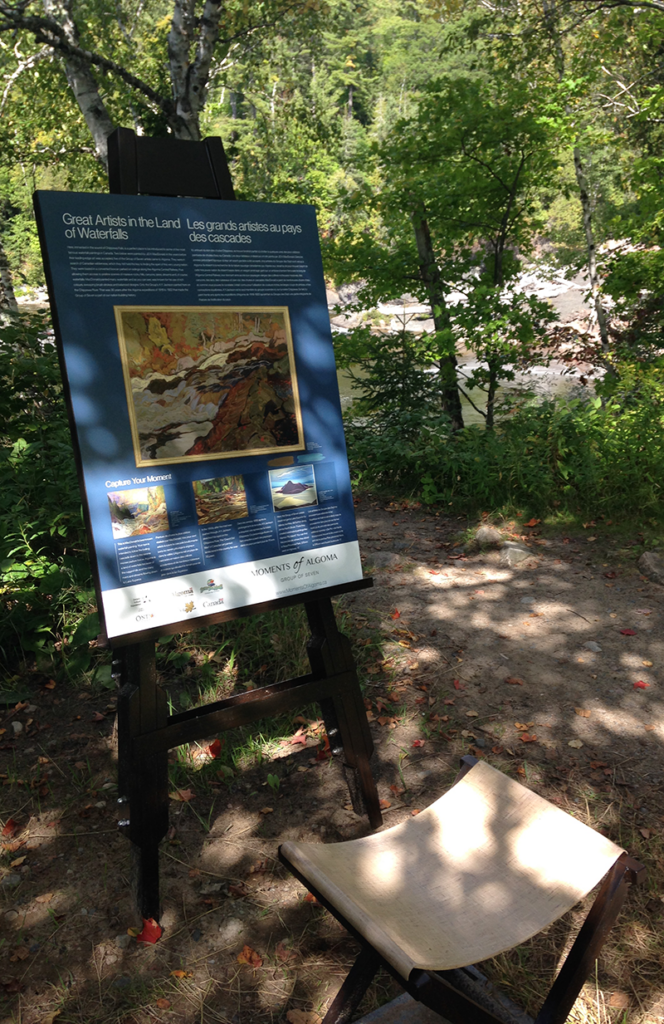
- Tourism Feasibility Studies, Business Planning and Economic Studies
Understanding the likely target markets and customer preferences is critical to determining the mix of facilities and service, design and scale of your tourism project.
Tourism Development International provides a comprehensive tourism feasibility study and business planning service to a wide range of clients, including state agencies, local government, hoteliers, community groups, commercial organisations and individual enterprises.
Typically, our feasibility study service will entail market-testing an idea for a new tourism product, to determine market reaction to the initial concept and to identify the strengths and weaknesses of likely competition. In addition to long term financial sustainability, the economic impact of tourism projects is often a key requirement of project funders.
In preparing tourism feasibility studies, business plans and economic studies, Tourism Development International works closely with our clients' other professional advisors ( i.e. architects, accountants etc.) with a view to providing an integrated ‘one-stop-shop’ service to our clients.
Left Navigation
- Strategic Tourism Master Planning
- Market Research
Main Navigation
- Mission Statement
- Quality Statement
- Professional Team
- Testimonials
- Middle East and Gulf States
- Great Britain
- USA and Canada
- Algarve Tourism Product Assessment and Development Action Plan
- Guizhou Tourism Master Plan, China
- Prince Edward Island Strategic Plan for Tourism 2021
- Tourism and Project Performance Monitoring and Evaluation Activities in the Kakheti Region, Georgia
- Concept Development and Feasibility Study – Munster Peaks
- Recreation Tourism and Commercial Product Identification Study for the Grand Canal Rural and the Royal Canal Rural
- Study on the Marketing Requirements of Dublin 2013-2020
- Ballyhoura Country Area Tourism Development and Marketing Strategy - Plan to 2020
- South Dublin Tourism Strategy
- Kylemore Abbey Conservation/Management Plan and Estate Business Plan
- Feasibility Study and Business Plan for the Cliffs of Moher Visitor Centre
- Killarney House and Gardens Operational Plan
- Waterford Crystal Visitor Experience Scoping Study and Market Research Programme
- Poland Rural Tourism Master Plan
- Handbook on Tourism Product Development
- Risk and Crisis Management in Tourism Sector - Recovery from Crisis in OIC Member Countries
- Study on Tourism Product Development and Marketing Strategies in COMCEC Member Countries
- Marketing Strategies for Tourism Destinations - A Competitive Analysis
- Mukhrani Village Tourism Development Plan, Georgia
- Albania Cultural Tourism Marketing Strategy and Action Plan
- Malaysia Rural Tourism Master Plan
- South Carolina Tourism Product Development Programme and Institutional Strengthening
- Nigeria Tourism Master Plan
- Uzbekistan Tourism Master Plan
- Assessment of Three Tourism Trends Impacting on Nepal's Tourism Sector
- Identification and Assessment of Business Opportunities in the Tourism Value Chain in Qatar
- Projects by Service
- Projects by Industry Sector
- Latest News
- TDI Press / Media Clips
- Survey Results
- Around the Globe
- Mailing List
- Address: Fitzwilliam Hall, Fitzwilliam Place Dublin 2, Ireland
- Phone: + 353 1 2301665
- Email: [email protected]
- Privacy Policy
Web Design by Webtrade

How To Conduct a Feasibility Study For Tourism Projects
$ 29.95
This 67 page best-selling manual is a comprehensive guide to conducting a feasibility study for different types of small and medium scale tourism projects. Each stage of the feasibility study is clearly and concisely explained – from the initial concept through the location evaluation process, market analysis and economic viability, to preparation of a report and business plan suitable for submitting to financial institutions or investors. Designed to minimise risk.
FREE Sample of: How To Conduct Feasibility Studies For Tourism Projects click here

Description
- Reviews (0)
Designed to minimise risk, this 67 page best-selling manual is a comprehensive guide to conducting feasibility studies for different types of small and medium scale tourism projects. Each stage of the feasibility study is clearly and concisely explained – from the initial concept through the location evaluation process, market analysis and economic viability, to the preparation of a report and business plan suitable for submitting to financial institutions or investors. Although our manual How To Conduct Feasibility Studies For Tourism Projects is specifically written for tourism-related businesses it will still be a great starting point for any proposed business.
Contents include:
- Is a pre-feasibility study justified?
- Planning the feasibility study
- Sourcing tourism facts and figures
- Initial research
- Project evaluation checklists: government policy, socio-economic factors, international visitor market, domestic visitor market, regional analysis, seasonality analysis, competitor analysis, project overview, location and site analysis. Accommodation – motels, caravan parks, strata title units. Conference facilities, attractions, tours and cruises. Government regulations, licences and insurance. Market analysis. Management, staffing and operation.
- Projecting demand
- Environmental impact assessment checklist
- Financial feasibility
- Structuring and writing the feasibility report
- Report production
- Business plan checklist
First published in 1983 and now in its 10th edition, this comprehensive manual is used by governments, large corporations, project developers, small businesses, educational institutions and training providers throughout Australia and in 24 countries.
Practical proven methods to assess viability, easy-to-read and apply concise step-by-step guidelines and check-lists. An invaluable time-saving resource for the development of tourism ventures and for training programs and training material.
FREE Sample of: How To Conduct a Feasibility Study For Tourism Projects click here
There are no reviews yet.
Only logged in customers who have purchased this product may leave a review.
You may also like…

How to Organise Special Events & Festivals
Related products.

How To Publish Profitable Tourist Guidebooks

How to Prepare Effective Applications for Grant Funding
- Global City & International State Travel
- Global Travel Service
- Air Passenger Forecasts
- Custom Forecasts
- Cruise Forecasts
- Visitor Economy
- Travel Industries
- Marketing Investment
- Events & Projects
- Testimonials
- Budget Analysis
- Policy Analysis
- Marketing Allocation Platform
Project Feasibility
- In the News
- Client Login
- Oxford Economics
Tourism Economics' ongoing analysis of traveler activity and economic dynamics provides a foundation for project feasibility analysis
Contact Us | Request Demo
Our quantitative approach answers key questions:
- Will the market support a proposed attraction or facility?
- What does a reasonable scenario of market demand imply for cash flow, profitability, and return on investment?
- What is the competitive market?
We have conducted feasibility analysis for resorts, condominium hotels, sports events, museums, and retail centers in the US, Caribbean, and Middle East to secure financing, gain government approvals, and adjust development scopes.
Related Content
The economic impact of otas in the european union, sizing worldwide tourism spending (or “gtp”) & tripadvisor’s economic impact, travel facilitation for enhancing mobility in the oic member countries.
Student Feasibility Studies for Hospitality & Tourism
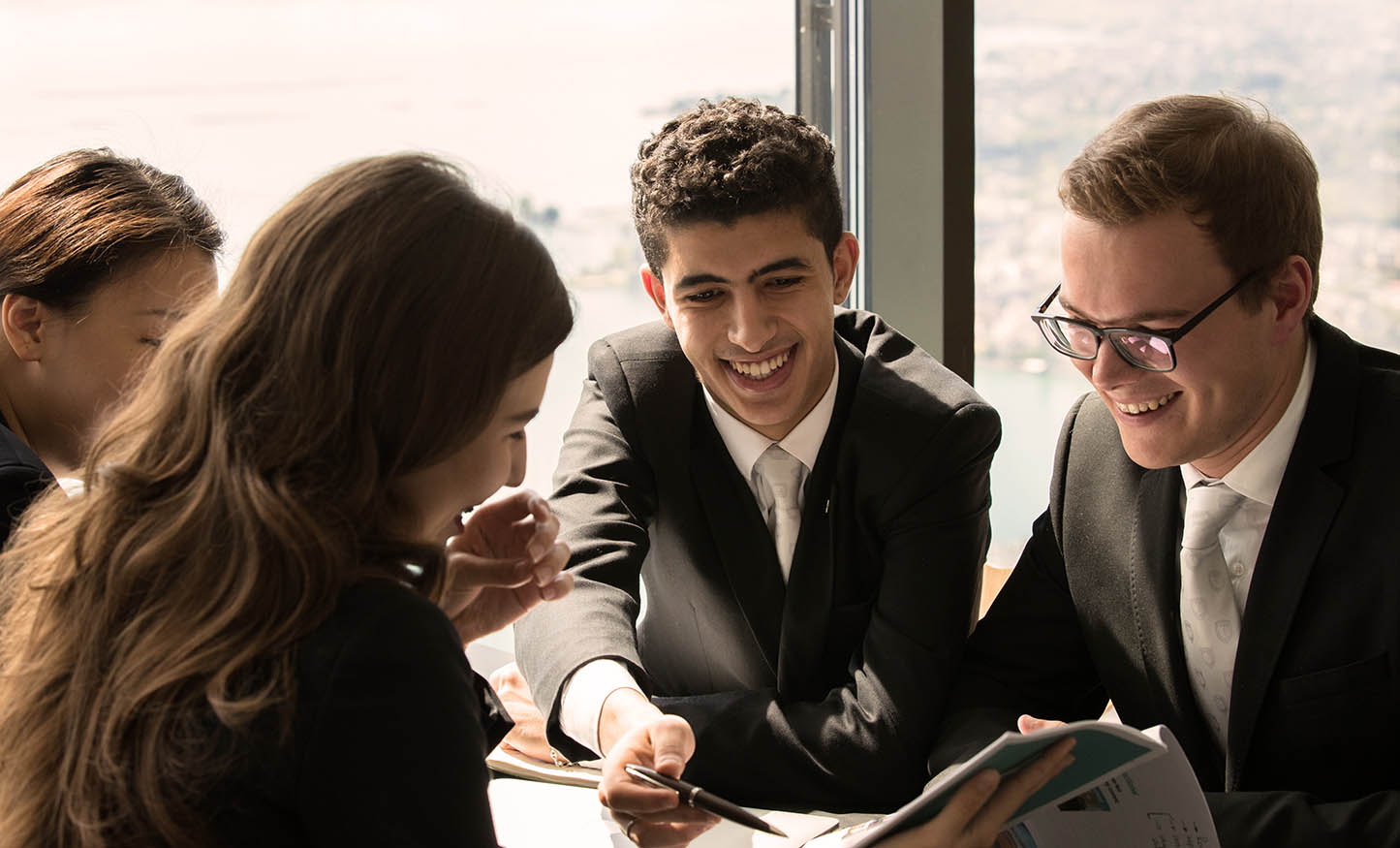
Every semester, Glion students conduct and present feasibility studies for hospitality and tourism partners in the industry. Their presentations show just how useful and creative an applied business project can be when you ask hospitality management students to get involved.
This summer, Glion was approached by Villeneuve à Venir, a local non-profit organization that promotes the sustainable development and the promotion of local community, its historic, cultural, and social heritage. With little more than a month to prepare, our students were asked to conduct a feasibility study for the renovation and repurposing of the piece of land and create a presentation for the stakeholders. Working in groups, the students were given a “blue sky” brief with the instructions to think outside the box and come up with an innovative concept.
Hospitality Business Concepts
In their multicultural groups, the students took a creative approach to choosing and expanding on their hospitality and tourism business concepts. From the five different groups, came five different ideas:
- Le Chocolatier, a chocolate-themed hotel with a café and spa
- A’vone Ville, an open space hotel village concept and event venue
- The Fingle & Wingle, a foodie hotel and marketplace for mingling
- Le Grand Ecran Hotel, a cinema-themed hotel
- La Cupola, an eco-hotel dome that produces zero waste
Creativity aside, the students went deep into the details of the services and facilities that would be featured on-site to a level of detail that was truly astounding. In addition to presenting the business concept and details, the groups were assigned to conduct their research based on a standard feasibility study outline which covered the following points.
Market Area Analysis
The students gathered information about the economic and demographic profiles of the region. This meant researching facts and trends concerning the domestic population, economic factors that impact the region and the tourists. Overall, they presented a remarkable amount of data and drew conclusions concerning the impact of certain factors such as the strong Swiss franc, the Consumer Confidence Index (CCI), the seasonality of tourism, and the possible implications of the project for employment in the region.
Apparently, this wasn’t always easy, as one student admitted: “During the research, we couldn’t really find the detailed numbers for Villeneuve, it’s such a specific area and the information was limited. So finding those facts wasn’t easy for a location that is not very big. Also Villeneuve has some protected areas and regulations, all of which are written in French, so for our non-French speaking classmates we had to translate.”
Project Site and Area Analysis
Each group presented significant research on the location of the project site and the accessibility. In the case of accessibility, they concluded that efficiency of the Swiss public transportation systems and the proximity of a highway off-ramp made the site easily accessible for domestic and international tourists. They also listed notable features and attractions which are existing magnets for visitors in the region. They even addressed the more complex issues concerning the site adaptability, taking into account the zoning, building codes and licencing.
Competition Analysis
When it came to analysing the competition, our students set the bar high by comparing their projects with hotels and event concepts from around the world. Since the project site had few high-quality hotels to compete with, they took a broader look at the competitors around the world. By doing so, the students took a step back from the traditional Swiss model of palace hotels and boutique hotels to present some very innovative concepts. They looked at everything from similar hotel themes and infrastructures, to the pricing and quality ratings, to get an idea of whether their hotel concept could beat the competition and draw tourists specifically to the hotel as a new feature.
Demand Analysis
Another tricky question that the students had to answer was that of demand: who would want to stay in their hotel, for how long, and how much would they be willing to pay? To gauge these answers, the students conducted surveys. The details of the survey methodology and response rates were not specified, but it was clearly a good exercise for the students to practice surveying and drawing conclusions based on the responses. In addition to the survey data, they also looked at similar hotels for pricing and occupancy rates to determine demand.
Financial Analysis
In this section of the presentation, the amount of care and precision that went into each project was evident, and the students really did think big with ideas that ranged in budget from CHF 7 million to nearly CHF 100 million.
The financial analysis is important for investors who need to know the bottom line and our students delivered by showing their calculations and presenting a final recommendation, a “go or no go” conclusion for the proposed concept. To their credit, the students of one hotel concept even admitted that their original plan was not feasible, due to the property costs, so they offered three alternatives to cut the cost of development and render the hotel plan viable. These calculations leave little to chance. Using their knowledge of rooms division and revenue management for hotels and restaurants, they provided a solid analysis of how much they would have to charge guests and how long it would take to stabilize the income and make the business profitable for the long term. This is where we really see the progress that students make during their long road from the hotel school classes of the first year to this final year of studies.
Student Reflections and Conclusions
After the excitement and adrenalin of the presentation had passed, we caught up with a few of these students to hear their feedback. And in terms of building experience for their future careers, this type of project is highly appreciated by the students.
“I think we were all very excited about this project because the investors were actually coming to see us, and maybe taking our ideas to develop it. That’s why for us it was really exciting and we put a lot of effort into it. We liked it,” says Jade Matarasso, a student from the group that presented the foodie hotel “Fingle and Wingle”.
Her classmate Tanya Zapata Sutcliffe concurs: “Going in front of the investors lends a reality to the situation because you’re presenting a project to real investors and this is how the real world works, so it’s a great project for us to experience how the real world works and not just a project for school. It’s something that I feel is very beneficial for the future and whatever business we want to do.”
“We had to adhere to a certain structure but how we approached each element was up to us,” says Denis Golovanov, one of the Chocolatier group members. And apparently there were some bumps along the way: “In terms of creativity, in the finance track we are very “by the book” so we have barriers, and for this project we didn’t have barriers at all. We could go crazy, we could do anything,” classmate Jade Matarasso added, “Because we had such very broad guidelines, we had to find a way to tackle the situation and it was difficult for us to think outside of the box and present something very different, very innovative, and yet remain concrete.”
Overall, the students all concurred that this project helped them to prepare for the next step in their lives: graduation and professional life. The stakeholders shared their appreciation for the hard work and creativity that went into the projects and presentations.
Win-Win for Students and Business Partners
Glion Institute of Higher Education incorporates real-world business case studies into the curriculum because they teach our students to approach business projects the right way, taking into account all the various factors, under the guidance of experienced faculty members.
“It’s all about linking theory with practice,” explains Claudio Zucco, the faculty member who worked with program leader Pia Huh to coordinate the project with the industry stakeholders.
“This type of project is about taking a specific case and working through the details to arrive at a profitable solution. It’s an excellent exercise in entrepreneurship and our students arrived at some very realistic conclusions. Participating in this sort of project is good for the students in many ways, but most of all, it gives them experience with the current trends and issues that tourism and hospitality businesses face.”

BUSINESS OF LUXURY

GLION SPIRIT
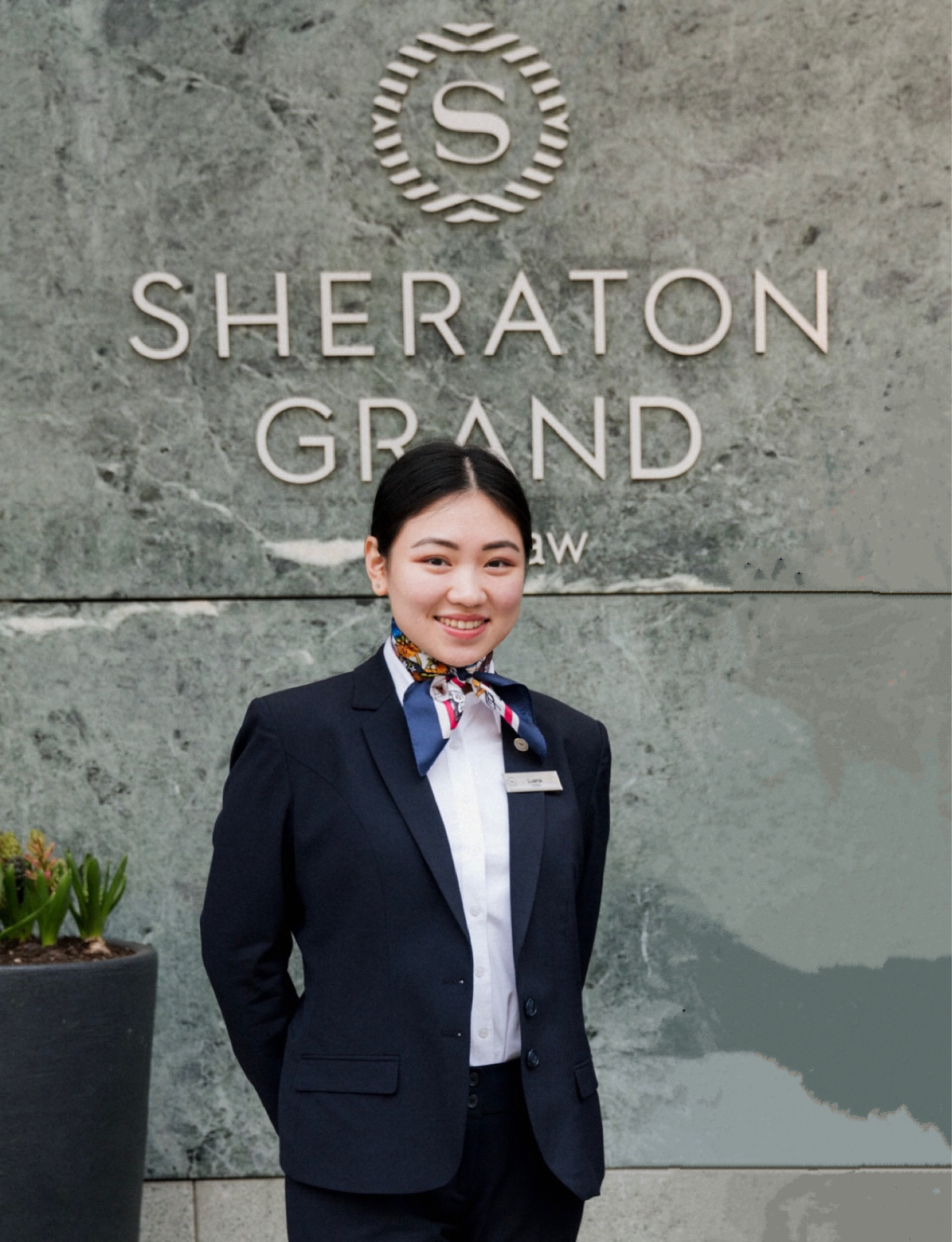
Hospitality internships
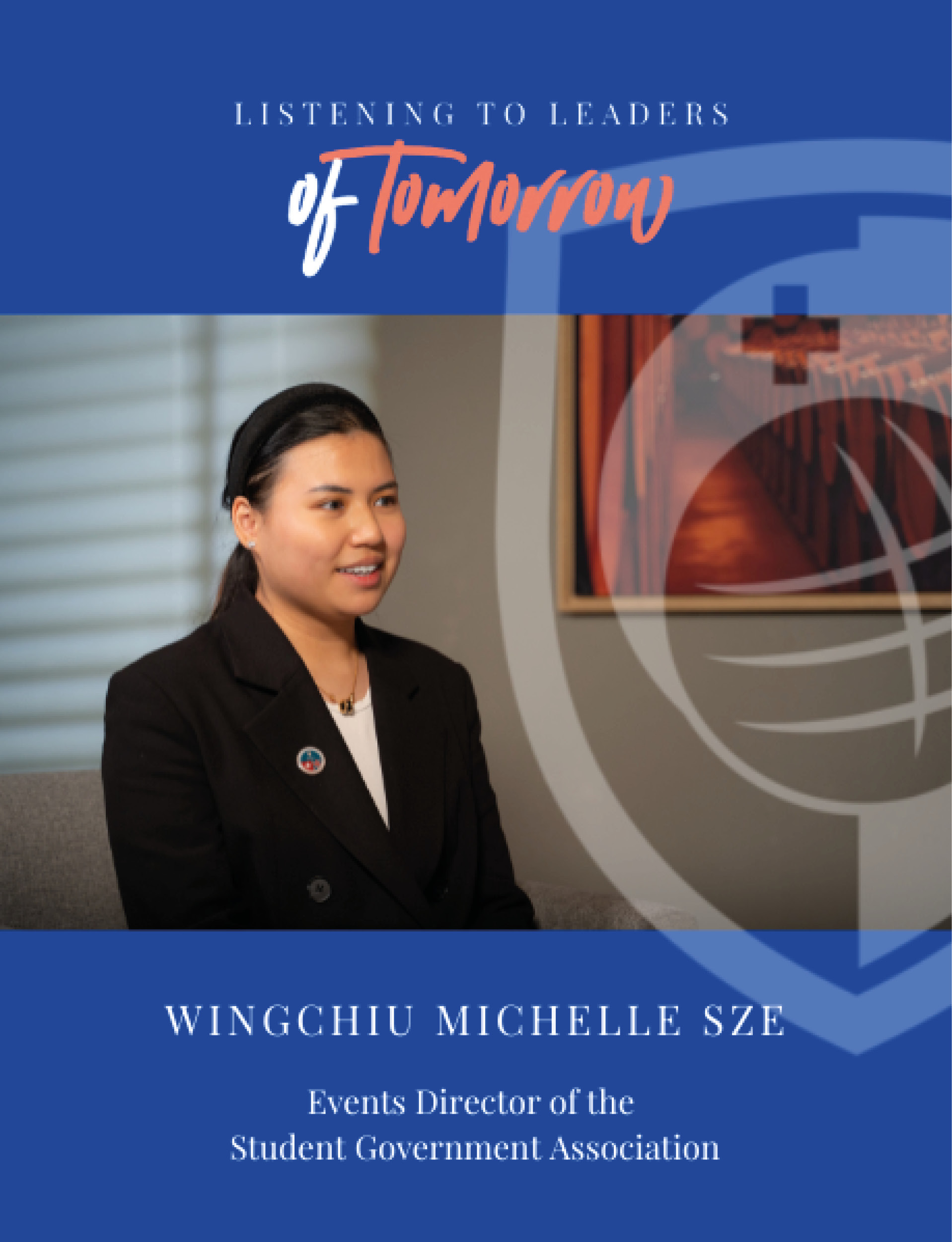
LISTENING TO LEADERS
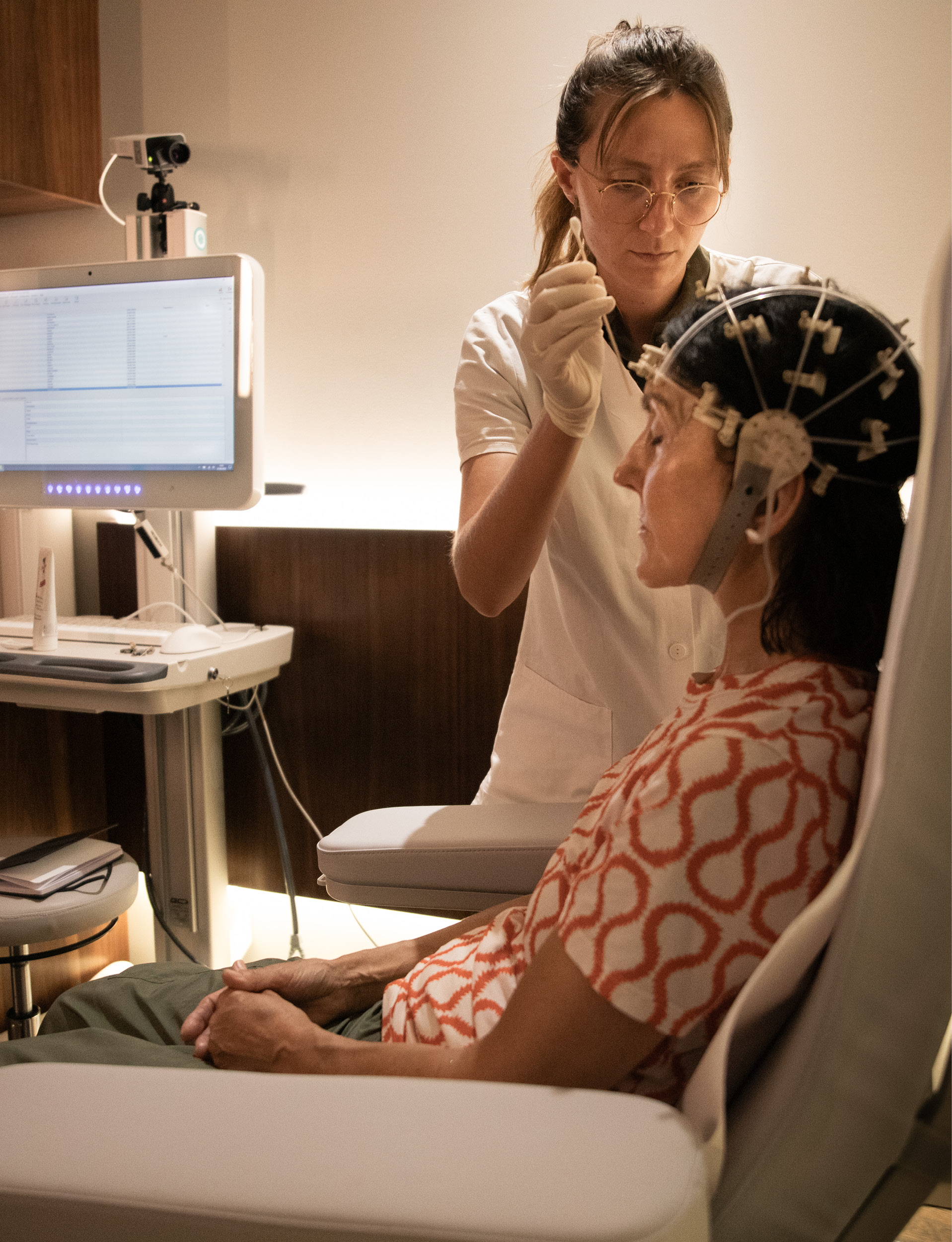
LIVING WELL
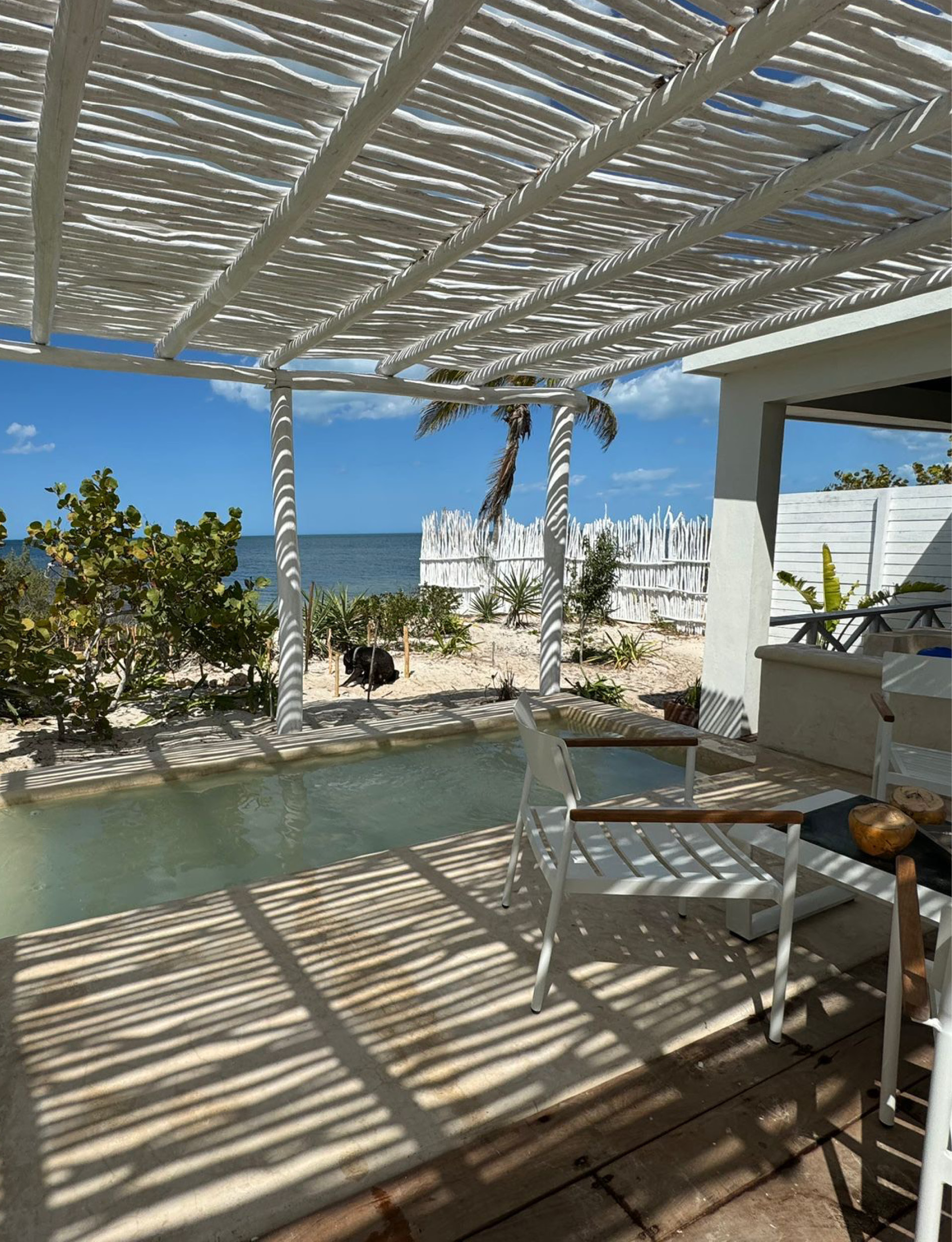
HOSPITALITY UNCOVERED

WELCOME TO GLION.
This site uses cookies. Some are used for statistical purposes and others are set up by third party services. By clicking ‘Accept all’, you accept the use of cookies
Privacy Overview
The state of tourism and hospitality 2024
Tourism and hospitality are on a journey of disruption. Shifting source markets and destinations, growing demand for experiential and luxury travel, and innovative business strategies are all combining to dramatically alter the industry landscape. Given this momentous change, it’s important for stakeholders to consider and strategize on four major themes:
- The bulk of travel is close to home. Although international travel might draw headlines, stakeholders shouldn’t neglect the big opportunities in their backyards. Domestic travel still represents the bulk of travel spending, and intraregional tourism is on the rise.
- Consumers increasingly prioritize travel—when it’s on their own terms. Interest in travel is booming, but travelers are no longer content with a one-size-fits-all experience. Individual personalization might not always be practical, but savvy industry players can use segmentation and hypothesis-driven testing to improve their value propositions. Those that fail to articulate target customer segments and adapt their offerings accordingly risk getting left behind.
- The face of luxury travel is changing. Demand for luxury tourism and hospitality is expected to grow faster than any other travel segment today—particularly in Asia. It’s crucial to understand that luxury travelers don’t make up a monolith. Segmenting by age, nationality, and net worth can reveal varied and evolving preferences and behaviors.
- As tourism grows, destinations will need to prepare to mitigate overcrowding. Destinations need to be ready to handle the large tourist flows of tomorrow. Now is the time for stakeholders to plan, develop, and invest in mitigation strategies. Equipped with accurate assessments of carrying capacities and enhanced abilities to gather and analyze data, destinations can improve their transportation and infrastructure, build tourism-ready workforces, and preserve their natural and cultural heritages.
Now boarding: Faces, places, and trends shaping tourism in 2024
Global travel is back and buzzing. The amount of travel fell by 75 percent in 2020; however, travel is on its way to a full recovery by the end of 2024. More regional trips, an emerging population of new travelers, and a fresh set of destinations are powering steady spending in tourism.
There’s no doubt that people still love to travel and will continue to seek new experiences in new places. But where will travelers come from, and where will they go?
We share a snapshot of current traveler flows, along with estimates for growth through 2030.
The way we travel now
Which trends are shaping traveler sentiment now? What sorts of journeys do today’s travelers dream about? How much are they willing to spend on their trips? And what should industry stakeholders do to adapt to the traveler psychology of the moment?
To gauge what’s on the minds of present-day travelers, we surveyed more than 5,000 of them. The findings reveal disparate desires, generational divides, and a newly emerging set of traveler archetypes.
Updating perceptions about today’s luxury traveler
Demand for luxury tourism and hospitality is expected to grow faster than for any other segment. This growth is being powered in part by a large and expanding base of aspiring luxury travelers with net worths between $100,000 and $1 million, many of whom are younger and increasingly willing to spend larger shares of their wealth on upscale travel options. The increase is also a result of rising wealth levels in Asia.
We dug deeper into this ongoing evolution by surveying luxury travelers around the globe about their preferences, plans, and expectations. Some widely held notions about luxury travelers—such as how much money they have, how old they are, and where they come from—could be due for reexamination.
Destination readiness: Preparing for the tourist flows of tomorrow
As global tourism grows, it will be crucial for destinations to be ready. How can the tourism ecosystem prepare to host unprecedented volumes of visitors while managing the challenges that can accompany this success? A large flow of tourists, if not carefully channeled, can encumber infrastructure, harm natural and cultural attractions, and frustrate locals and visitors alike.
Now is the time for tourism stakeholders to combine their thinking and resources to look for better ways to handle the visitor flows of today while properly preparing themselves for the visitor flows of tomorrow. We offer a diagnostic that destinations can use to spot early-warning signs about tourism concentration, along with suggestions for funding mechanisms and strategies to help maximize the benefits of tourism while minimizing its negative impacts.
Six trends shaping new business models in tourism and hospitality
As destinations and source markets have transformed over the past decade, tourism and hospitality companies have evolved, too. Accommodation, home sharing, cruises, and theme parks are among the sectors in which new approaches could present new opportunities. Stakeholders gearing up for new challenges should look for business model innovations that will help sustain their hard-won growth—and profits.
Unbundling offerings, cross-selling distinctive experiences, and embracing data-powered strategies can all be winning moves. A series of insight-driven charts reveal significant trends and an outlook on the future.
RELATED ARTICLES

The future of tourism: Bridging the labor gap, enhancing customer experience

The promise of travel in the age of AI

From India to the world: Unleashing the potential of India’s tourists
Palmetto High's AICE Travel and Tourism Blog
This is the records page for PHS FBLA Wonderworks planning committee. This project is run by a select group of Palmetto High School Seniors and Juniors, in the AICE Travel and Tourism class. Our goal is to ensure a seamless process for FBLA members at Palmetto High School in getting to Orlando, and in the activities and accommodations experienced once there. Members include: Matthew Connar, Scott Christensen, Wyatt Broxson, Dalton Bloch, Kyle Schubring, and blog author Joshua Evangelista
A Note on Dates:
Feasibility studies, fbla orlando trip feasibility study.

What score did you guys get?

- Buy Lexington Monopoly
- Current Issue
- Health Kentucky
- Advertise in The Lane Report
- Ad Dimensions
- Construction
- Economic Development
- Hospitality
- State Government
- National Government
- Manufacturing
- Real Estate
- Transportation
- Philanthropy
- Wealth Management
- Workforce Development
- Big Moves Submissions
- Executive Profile Submission
- Sponsored E Blast Submission
- Seeking Employment
- Submit Your Upcoming Event
- Lane Report
- General Questions
- Writer’s Guidelines
- Privacy Policy
- Google Plus
Dream Big Burnside Authority receives $100K state appropriation for feasibility study

BURNSIDE, Ky. — The Dream Big Burnside Authority celebrated a legislative victory during the recent National Travel and Tourism Week, as members accepted a $100,000 appropriation from the Kentucky General Assembly for a feasibility study to guide the future of General Burnside Island State Park.
Conducting a feasibility study is the next step in being prepared to issue a request for proposal to develop the island through a public-private partnership (P3), which the Dream Big Authority has been working toward since its inception in 2021. A joint effort between the City of Burnside and the Somerset-Pulaski Economic Development Authority (SPEDA) with a nine-member board comprised of tourism and economic development professionals from across Pulaski County, the Dream Big Authority seeks to partner with the Commonwealth of Kentucky to add a lodge, restaurants, a conference center and other amenities to General Burnside Island.
The feasibility study will assess the long-term potential of such a project with the advice of developers, scholars, and community stakeholders, and will be conducted with five goals in mind: (1) describe consumer demand for the project, (2) estimate economic impacts on the region, (3) provide details on similar projects, (4) estimate development costs, and (5) identify potential funding sources and options to move forward.
Developing General Burnside Island would accomplish what the late Gov. A.B. “Happy” Chandler set out to do in 1958 when the U.S. Congress transferred the title for Burnside Island to the Commonwealth of Kentucky to create a public park. According to the Congressional Record, following an initial development phase that included a recreation area with a swimming pool, picnic tables, grills, a group camp, tent/trailer area and golf course, Chandler envisioned the second phase of development would include “a central building, eating and sleeping accommodations, and the like,” according to a letter from the state’s commissioner of conservation at that time.
More than 65 years later, General Burnside Island continues to resemble the first phase of this vision, despite the creation of Dream Big Burnside and a 2022 directive from the General Assembly to develop a comprehensive statewide proposal to enhance Kentucky’s state park system through public-private partnerships.
SPEDA President and CEO Chris Girdler said he appreciates the General Assembly’s commitment to helping develop a firm foundation for General Burnside Island’s growth and success as an overnight tourist destination. He said he is also grateful to the attorneys of Frost Brown Todd LLP, experts in P3 projects, who have helped guide the Dream Big Authority through this process.
“No one said this would be an easy and quick process,” Girdler said. “If so, it would have been done decades ago. We remain committed to pursuing the original vision laid out in 1958 when Congress transferred the title of Burnside Island to the Commonwealth of Kentucky. Our community is united behind this effort and we are thankful to our state legislators for recognizing the incredible opportunity in front of us by providing funding assistance. Their legislative approach is helping us obtain our goal of creating job opportunities for our citizens, increasing tourism and lodging opportunities, and enhancing the quality of life for our people.”
Lake Cumberland Tourism Executive Director and Dream Big Authority Vice Chair Michelle Allen said she is thrilled to announce this appropriation during National Travel and Tourism Week, a time dedicated to celebrating travel’s essential role in stimulating economic growth, cultivating vibrant communities, creating quality job opportunities, inspiring new businesses and elevating the quality of life for Americans every day — all of which will be accomplished by developing Burnside Island.
“This feasibility study will help pave the way for us to transform this beautiful recreational island into a thriving tourism destination, which was intended from the very beginning,” Allen said. “I look forward to discovering what’s possible and developing forward-thinking, strategic plans for Burnside through this process.”
Girdler and Burnside Mayor Robert Lawson have testified before state legislative committees and met with the Kentucky Department of Parks about the potential of establishing a public-private partnership. They are hopeful this feasibility study will jump-start an agreement to do so in Burnside, where it is of critical importance, Lawson said.
“The economic impact of producing a successful lodging and commercial venue in the heart of Burnside cannot be understated,” Lawson said. “Enacting the vision of the Dream Big Authority will directly improve the quality of life for Burnside residents through the provision of new employment opportunities, an influx of fresh tourism-related dollars to small-owned, local businesses, and a novel entertainment district for all ages to enjoy. The ripple effect of developing an attractive location bordering the picturesque lake waters and cloaked in General Burnside Island’s scenic beauty will further establish Pulaski County as the heart of Lake Cumberland and will serve as a regional showpiece locale for citizens and guests of the area alike.”
Lawson said the City of Burnside supports the Dream Big Authority’s recommendation to enact a preliminary assessment of the area. Both entities openly welcome mutually beneficial cooperation by Kentucky State Parks through the process, he said.
“The City of Burnside wants to specifically acknowledge the immense contributions of Chairman Chris Girdler and the other Dream Big board members for making this vision a reality and for maintaining a community-oriented mindset throughout,” Lawson said.
You may also like

Kentucky Agricultural Finance Corp. approves $3,621,701 in loans

Paducah Convention & Visitors Bureau (CVB) Appoints Executive Director

Happy National Bourbon Day!

Popular Stories
- Kentucky physician inaugurated as president of the American Medical Association
- Brown-Forman announces executive leadership change
- Latest Gallup poll reveals employees’ views on workplace engagement, stress
- States Where People Are the Most Delinquent on Debt
- Kentucky is now home to one of the nation’s first autonomous pharmacy centers

The Lane Report
- Kentucky bluegrass legends set to headline upcoming Country Music Highway Tribute Show
- Gov. Beshear Announces $8.5 Million for 12 Projects To Improve Communities Across Kentucky
- Oak Grove Tourism announces: The return of Kentucky Bands, Bourbon & Wine Festival
- United States Trampoline & Tumbling Association National Championships Headed To Louisville
- Gov. Beshear: Disaster Unemployment Assistance Available for Those Impacted by April 2 Severe Storm
Language selection
- Français fr
Backgrounder: Transit investments in B.C. will help steer rural commuters to a smoother ride
From: Infrastructure Canada
Backgrounder
The federal government is investing up to $1.7 million through the Rural Transit Solutions Fund to support 9 transportation projects across British Columbia.
Project information:
Page details

IMAGES
VIDEO
COMMENTS
The study found that tourism in Caraga Region was growing and ATB was poised to benefit from this growth with experienced staff, an excellent location, and effective management. The study recommended ATB focus on effective segmentation, positioning as travel specialists, differentiating its offerings through marketing, and developing repeat ...
How can you conduct a feasibility study that leads to successful tourism products? Powered by AI and the LinkedIn community. 1. Define your objectives. 2. Gather relevant data. Be the first to add ...
Behind most sustainable tourism developments lies a sound feasibility study and a solid business case. TRC is recognised for innovation in identifying new products that will be attractive for a destination whether they be tours, trails, accommodation, visitor facilities, services and transport. We also help clients improve their business ...
Feasibility Study in Tourism Demian Hodari University of Applied Sciences andArts Western, Lausanne, Switzerland Feasibility studies are a standard component in preplanning hotel and tourism projects. They involve the collection and analysis of data to provide stakeholders with an independent and objective perspective on potential development ...
Feasibility studies are a standard component in preplanning hotel and tourism projects. They involve the collection and analysis of data to provide stakeholders with an independent and objective perspective on potential development opportunities. In contrast to appraisals and valuations, which usually only estimate an existing property's ...
Tourism Feasibility Study. Finally, a specific feasibility study for travel and tourism project might differ somewhat from a hotel feasibility analysis. These are usually destination focused, and take a broader approach to the core infrastructure needed to build that destination.
By following these major steps, you can conduct a thorough economic feasibility study to evaluate the potential of a new tourism development project in your area.) (ChatGPT, 2024).
It presents a simple template that shows the key components of a feasibility study and also a hypothetical case of study of a boutique hotel that helps in relating the concepts and ideas previously developed. ... The Emerald Handbook of Entrepreneurship in Tourism, Travel and Hospitality, Emerald Publishing Limited, Leeds, pp. 351-368. https ...
At the core of our tourism expertise is our ability to quickly and effectively assess the tourism business case. This requires access to the best market intelligence combined with financial planning expertise, two of the core strengths at the TOURISM COMPANY.Together the three partners have worked on feasibility assessments and business planning for tourism products and experiences in every ...
Tourism Development International provides a comprehensive tourism feasibility study and business planning service to a wide range of clients, including state agencies, local government, hoteliers, community groups, commercial organisations and individual enterprises. Typically, our feasibility study service will entail market-testing an idea ...
The research and its subsequent stakeholders' consultations indicated that a degree in tourism management can lead graduates to various career opportunities in the tourism industry, including hotel and resort management, event planning, tour operations, and travel agency management.
This 67 page best-selling manual is a comprehensive guide to conducting a feasibility study for different types of small and medium scale tourism projects. Each stage of the feasibility study is clearly and concisely explained - from the initial concept through the location evaluation process, market analysis and economic viability, to ...
Project Feasibility - Tourism Economics. Tourism Economics US Headquarters. 303 West Lancaster Avenue, Suite 2E. Wayne, PA 19087. U.S. +1 610 995 9600. Tourism Economics Europe Headquarters. Abbey House. 121 St Aldates. Oxford, OX1 1HB.
Conclusions. Horizonless' virtual touring application represents a feasible business. Success is wholly dependent upon Horizonless' ability to scale this model. Horizonless believes this concept can generate profit margins of 50% over the long-term, with ~$200k net profit in year 5.
The document provides an overview of the system development life cycle for a tourism management system project. It discusses 1) defining a system and the systems life cycle, 2) analyzing the existing manual tourism management system and identifying drawbacks, and 3) conducting a feasibility study to analyze the problem, identify solutions, and evaluate costs and impacts. The objectives are to ...
According to the research by Pitana & Ketut (2009), tourism feasibility study is divided into seven aspects: a) Attraction is a ... Safety with the indicators of travel comforts and good road conditions, and g) Relation with both similar and different tourist objects. Several factors influencing the demand and offer of tourist attractions are a ...
This chapter discusses the purpose, components and limitations of a feasibility study for tourism, hospitality and events (THE) facilities. The facility manager and operator should use the feasibility study for their decision making on whether to proceed with any development. This can only be accomplished successfully if the respective stages ...
8 August 2020. Every semester, Glion students conduct and present feasibility studies for hospitality and tourism partners in the industry. Their presentations show just how useful and creative an applied business project can be when you ask hospitality management students to get involved. This summer, Glion was approached by Villeneuve à ...
Now boarding: Faces, places, and trends shaping tourism in 2024. Global travel is back and buzzing. The amount of travel fell by 75 percent in 2020; however, travel is on its way to a full recovery by the end of 2024. More regional trips, an emerging population of new travelers, and a fresh set of destinations are powering steady spending in ...
1. Describe a simple concept plan for a travel and tourism event (What type of event and where it would be held.) 2. Identify four possible objectives of an event such as this. 3. Estimate the number of days/meetings required to fully plan and then manage an event such as this. 4. Identify the potential customers of an event such as this. 5. Estimate a date that this event could be hosted to ...
This project is run by a select group of Palmetto High School Seniors and Juniors, in the AICE Travel and Tourism class. Our goal is to ensure a seamless process for FBLA members at Palmetto High School in getting to Orlando, and in the activities and accommodations experienced once there. ... 5k Feasibility Study. 3. Setting up a 5K race at ...
The Dream Big Burnside Authority celebrated a legislative victory during the recent National Travel and Tourism Week, as members accepted a $100,000 appropriation from the Kentucky General ...
"During the 90 days allocated for the feasibility study, we will be looking at an updated analysis of achievable fundraising goals, essential elements for fulfilling the center's mission ...
This project will complete a feasibility study centered around public engagement for a connection-based transit route in Cranbrook and the surrounding rural areas. $40,000. $0. $15,139. $0. City of Duncan, Malahat First Nation, First Nations of the City of Victoria . Malahat First Nation. Malahat Transit Plan for Malahat Nation
Likino-Dulyovo Tourism: Tripadvisor has 61 reviews of Likino-Dulyovo Hotels, Attractions, and Restaurants making it your best Likino-Dulyovo resource.
Things to Do Restaurants Flights Travel Stories Cruises Rental Cars Tripadvisor Plus More. Add a Place Airlines Travelers' Choice Help Center. Plan Your Trip to Elektrostal: Best of Elektrostal Tourism. Essential Elektrostal. Do. Places to see, ways to wander, and signature experiences. See all. Statue of Lenin. 16. Monuments & Statues. Banya. 10.
Travel Guide. Check-in. Check-out. Guests. Search. Explore map. Visit Elektrostal. Things to do. Check Elektrostal hotel availability. Check prices in Elektrostal for tonight, Apr 20 - Apr 21. Tonight. Apr 20 - Apr 21. Check prices in Elektrostal for tomorrow night, Apr 21 - Apr 22. Tomorrow night.
In this article, we advance a model for the traction power supply of a medium-capacity railway system along the major Pham Van Dong (PVD) arterial route situated in the northeastern sector of Ho Chi Minh City (HCMC), Vietnam. This study simulates an in-depth analysis of the carrying capacity and feasibility of traction power supply for this scenario based on a safe moving-block system ...
Lyubertsy Tourism: Tripadvisor has 1,975 reviews of Lyubertsy Hotels, Attractions, and Restaurants making it your best Lyubertsy resource.
The city is already in the design phases of the project that aims to keep up with the explosive growth in travel at the airport. ... School Feasibility Study - $750,000 ... state-owned heritage ...